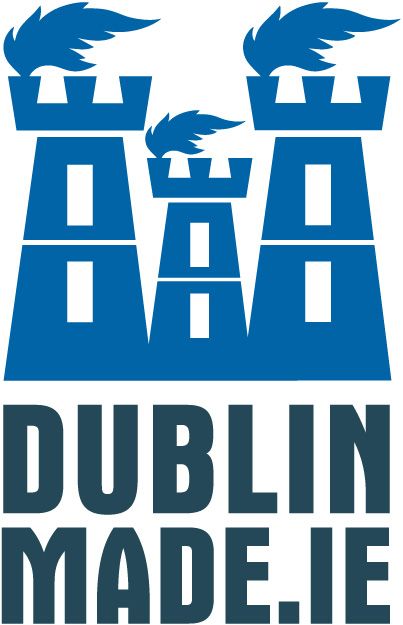
Dublin 1,600 Battery Electric Delivery Vehicles 1946 to 1992 | Season 4 – Episode 6
Wheels Feb 06, 2024
In the present time, we find ourselves inundated with advertisements from car manufacturers asserting the dawn of a new era for electric vehicles. However, this is not a new phenomenon as from the late 1940s to the early ’80s, businesses in Dublin relied on more than one thousand six hundred battery-powered delivery floats and vans for their commercial operations.
Familiar operators of battery-electric floats and vans around Dublin were Johnston Mooney O’Brien, Hughes Brothers, Premier Dairies, Guinness Brewery, the Keslo, Dartry and Swastika laundries. Lesser-known operators were the ESB, Kiely’s Bakery, Williams and Woods chocolate manufacturers and in regional towns Drogheda and Dundalk Dairies.
The various battery-electric vehicles were supplied by a multitude of British manufactures such as BMA, Brush Smiths-NCB and Wilson through local distributors such as Murphy Electric, Upper Stephen Street, Dublin. Most of the bodywork was built by Dublin Vehicle Builders of Summerhill. During the seventies and early eighties, a significant number of the aging electric floats were substituted with larger vehicles, predominantly Cabacs and Morrisons.
It was not uncommon for a single company to manage substantial battery-electric fleets, as was the case with Johnston Mooney O’Brien who in the early 1950s transitioned from horse-drawn traps to a formidable fleet comprising one hundred and thirty battery-electric delivery vans for door-to-door deliveries. Additionally, they maintained a smaller motor fleet for longer journeys across the city.
These days there is much talk among consumers regarding the durability of newly acquired electric vehicles, with concerns about potential faults emerging from the battery or complex electronics. In contrast, a typical battery-electric van in the Johnston Mooney O’Brien fleet was a ‘Wilson’ no.33 model, acquired in 1953 with bodywork by Dublin Vehicle Builders of Summerhill. Among a group of fifty-one similar vehicles, it served dutifully for twenty-eight years.
Also, the Dartry Laundry Company No. 18 battery-electric delivery van stands as a further testament to the durability of these vehicles as it provided an astonishing thirty-six years of reliable service without any such issues. No. 18 is now on display at the National Transport Museum at Howth.
A Dublin laundry with an unusual sounding name, was the ‘Swastika Laundry’ that operated in Ballsbridge. Founded in 1912 by County Leitrim native John W. Brittain who adopted the 7,000-year-old Swastika as a symbol of prosperity and good luck. The Swastika logo was prominently displayed on their battery-electric delivery fleet and on the chimney stack of their Ballsbridge plant. It is worth noting that it was not until 1920 that the National Socialist German Workers’ Party formally adopted the same symbol.
In the early 1960s Williams and Woods of Kings Inns Street Dublin were using an NCB C-140 electric van (Registration: ZL 2219) with the nickname “Tobler” to deliver the Toblerone chocolate bars they made.
In the 1970s keen to publicise the potential of a new era of electric transport the ESB (Electricity Supply Board) operated their own Morrison electric van (Registration: 5444 ZA).
Premier Dairies managed a fleet of 380 electric vehicles, specifically Smiths-NCB battery-electric floats and this author fondly remembers them making deliveries on the Finglas Road.
The vast majority of battery-electric vehicles used in Ireland were floats or vans, lorries being quite rare. A familiar sight in Dublin was the Dartry Laundry Company, Brush 2-ton lorry (ZH 2511) bought in 1947 for €1,506.61. Brush of Leicestershire had a good name for reliability and their standard ten-year life expectancy was often far exceeded. After an incredible thirty-four years of service the 2-ton Brush was withdrawn in May 1981.
By the early 1980s the convenience of supermarkets had put an end to door-to-door deliveries in Dublin with bread and milk deliveries being the last to go. Similarly, the growing popularity of having a washing machine at home signalled the decline of Dublin’s laundries and their fleets of battery-powered delivery vans.
The National Transport Museum of Ireland, located at Howth, Dublin, has on display a restored 1946 Morrison’s electric laundry van.
If you have a story to share, please email Kevin Reid [email protected]
Sources of Information, Photograph and Video Credits:
Ask About Ireland
Dublin City Public Libraries
ESB Archives
Michael Corcoran
Old Dublin Town
Premier Dairies
R567titan

